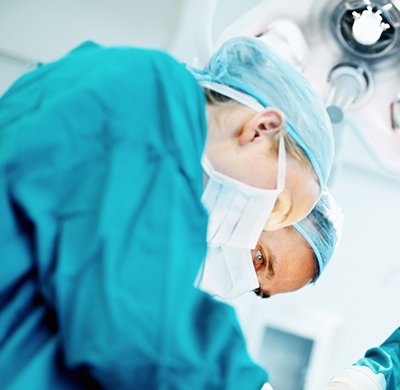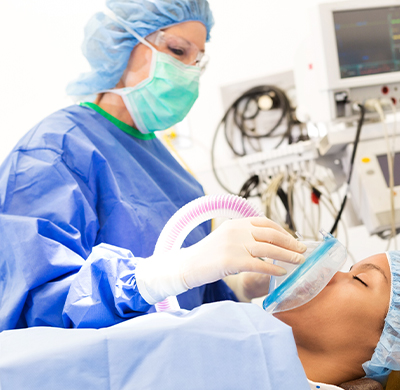Welcome to the Patient Education Library of Southern Regional Pain Services
Pinched Nerves in the Back-Spinal (Lumbar) Fusion/lumbar spinal stenosis
Introduction
Anatomy
Causes
Trauma from motor vehicle crashes or work related injuries can dislocate the spine and the spinal canal. Acquired Spinal Stenosis occurs because the spine is moved out of alignment, causing the spinal canal to narrow. “Burst” fractures from traumatic injury can cause bone fragments to enter the spinal canal and aggravate the spinal cord and spinal nerves.
Symptoms
Prolonged standing or walking may cause your symptoms to increase. If you bend forward or sit, your symptoms may be relieved. These positions increase the room in the spinal canal and take pressure off of the spinal cord.
If the spinal nerves in the lower end of the lumbar spine are compressed, a condition called Cauda Equina Syndrome may result. Cauda Equina Syndrome can cause you to lose control of your bowel and bladder. Other symptoms include low back pain, leg pain, leg weakness, lower body sensory deficits, and reduced or absent leg reflexes.
Diagnosis
Treatment
Most cases of Spinal Stenosis can be treated with non-surgical methods aimed at pain relief. Over-the-counter medication or prescription medication may be used to reduce pain. If your symptoms do not improve significantly with these medications, your doctor may recommend physical therapy or epidural steroid injections.Epidural steroid injections may be performed by your doctor or by a pain management specialist. The injections are placed into the space around your spinal cord and nerves. The steroid (a type of cortisone) "leaks" around the nerves to decrease inflammation and irritation. The injections are often given in a series of three-once per week for three weeks. The results of these injections are very variable.
Occupational or physical therapists can help you strengthen your back, stomach, and legs. Persons with weak stomach muscles and spinal degeneration may wear a lumbar brace or corset during activities to provide support. Stretching exercises will help to keep your back flexible. Cardiovascular exercises help to build up your endurance and improve blood circulation to your nerves. This can help to relieve the symptoms of Spinal Stenosis. Your therapist can also recommend durable medical equipment to aid your safety and activity performance. Such devices could include a cane for walking or a shower chair. Physical therapy is also used following surgery for spinal stenosis. See the section on recovery for specifics.
Surgery
Non-surgical treatments for Spinal Stenosis are designed to relieve pain and restore function, but they cannot correct the narrowing of the spinal canal. Surgery is recommended when non-surgical treatments have provided minimal or no improvement of your symptoms. Surgery is also advised if your leg weakness becomes progressively worse or if you experience associated bowel and bladder problems.The most common surgery for Spinal Stenosis is Lumbar Laminectomy, also called Lumbar Decompression Surgery. The goal of this surgery is to relieve pressure on the spinal cord and nerves by enlarging the spinal canal where it has narrowed. To do so, the surgeon removes all or part of the lamina on the effected vertebrae.
You will be sedated for your surgery. During a Laminectomy, the surgeon makes an incision down the middle of the lumbar spine. The surgeon detaches the muscles and tissues along the back of the spine to gain access to the spinal bones. Next, the surgeon removes part or all of the lamina. The surgeon also removes bone spurs, diseased tissue, or the sections of a disc that have extended into the spinal canal.
Sometimes the facet joints on the vertebrae are unstable after the Laminectomy. They may also be enlarged and fragile because of arthritis. In such cases, the surgeon may perform a second surgical procedure called Lumbar Spinal Fusion. The purpose of Lumbar Spinal Fusion is to permanently connect two or more vertebrae to stop movement and relieve pain caused by movement.
Posterior Lumbar Spinal Fusion is the most common type of fusion surgery for the lower back. In this procedure, your surgeon uses bone graft from your pelvis, or from another source, to make the spinal levels heal to each other, forming a single block of bone and eliminating painful motion. Surgical hardware, such as screws and rods secures the vertebrae together and allows the bone grafts to heal, fusing together the vertebrae.
At the close of the Posterior Lumbar Spinal Fusion, a drainage tube may be placed to help remove fluid from the surgical area. The drainage tube is usually kept in place for one to two days. You will most likely wear a rigid brace to support your spine while it heals.
Recovery
Most people stay overnight in the hospital following a Spinal Lumbar Laminectomy. Individuals that received a Lumbar Spinal Fusion stay in the hospital a bit longer. You may need a little help from another person during the first few days or weeks at home. If you do not have family members or a friend nearby, talk to your doctor about possible alternative arrangements.The recovery process is different for everyone. It depends on the type of surgery you had and the extent of your condition. Your surgeon will let you know what to expect. Generally, the recovery time for a Spinal Lumbar Laminectomy is four weeks for resuming light activity and up to several months for a full recovery. Lumbar Spinal Fusion has a longer recovery time.
Physical therapy for both surgery types usually becomes more intense about six weeks following surgery. At first, your therapists will apply treatments to help reduce pain. You will gradually learn exercises to strengthen your lower back and stomach muscles and improve your endurance. The rehabilitation process is longer for individuals that had Lumbar Spinal Fusion.
Prevention
Your therapists will teach you ways to safely position your body to protect your back during movements. You should use proper body mechanics during all activities. The use of proper body mechanics is important for preventing future injury. Additionally, you should continue to use your durable medical equipment, such as shower chairs or toilet risers, as advised.

Copyright © 2025 - iHealthSpot Interactive - www.iHealthSpot.com
This information is intended for educational and informational purposes only. It should not be used in place of an individual consultation or examination or replace the advice of your health care professional and should not be relied upon to determine diagnosis or course of treatment.
The iHealthSpot patient education library was written collaboratively by the iHealthSpot editorial team which includes Senior Medical Authors Dr. Mary Car-Blanchard, OTD/OTR/L and Valerie K. Clark, and the following editorial advisors: Steve Meadows, MD, Ernie F. Soto, DDS, Ronald J. Glatzer, MD, Jonathan Rosenberg, MD, Christopher M. Nolte, MD, David Applebaum, MD, Jonathan M. Tarrash, MD, and Paula Soto, RN/BSN. This content complies with the HONcode standard for trustworthy health information. The library commenced development on September 1, 2005 with the latest update/addition on February 16, 2022. For information on iHealthSpot’s other services including medical website design, visit www.iHealthSpot.com.






